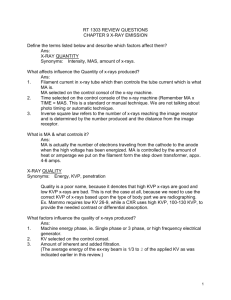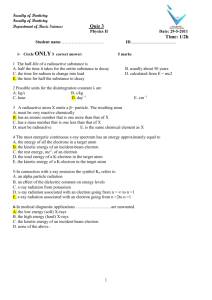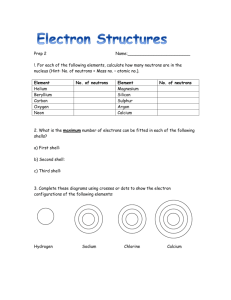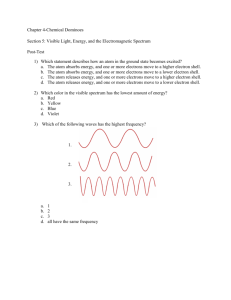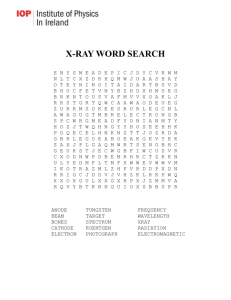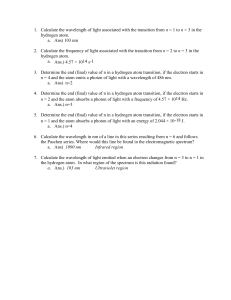RADT 1303 Chpt 8 Review Questions
advertisement
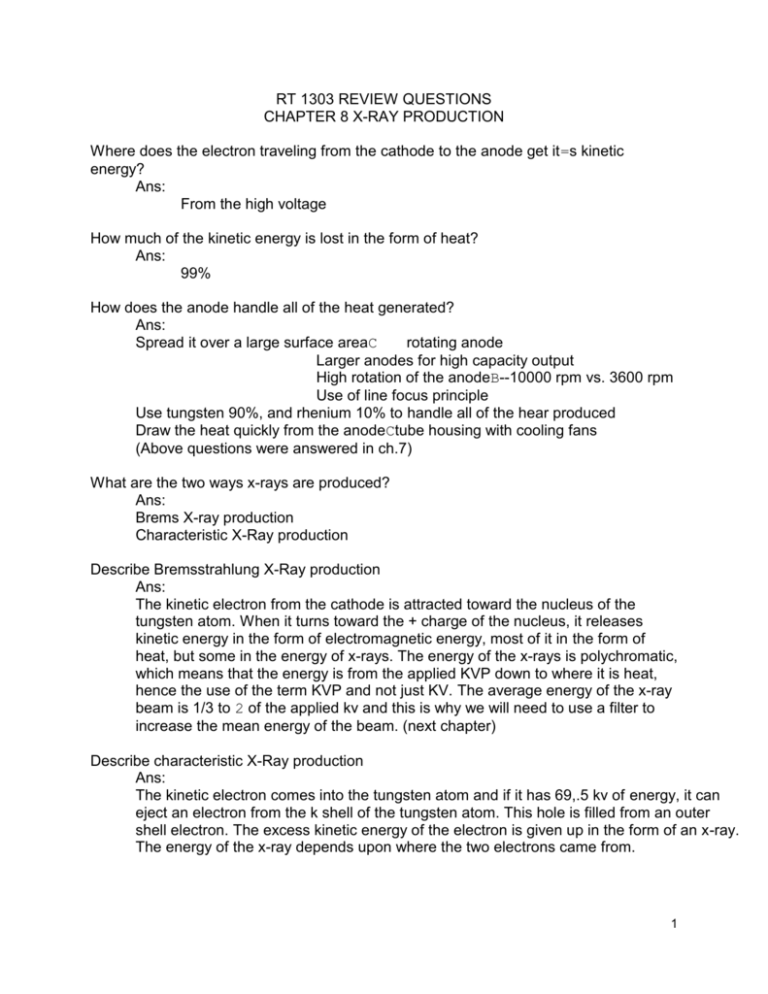
RT 1303 REVIEW QUESTIONS CHAPTER 8 X-RAY PRODUCTION Where does the electron traveling from the cathode to the anode get it=s kinetic energy? Ans: From the high voltage How much of the kinetic energy is lost in the form of heat? Ans: 99% How does the anode handle all of the heat generated? Ans: Spread it over a large surface areaC rotating anode Larger anodes for high capacity output High rotation of the anodeB--10000 rpm vs. 3600 rpm Use of line focus principle Use tungsten 90%, and rhenium 10% to handle all of the hear produced Draw the heat quickly from the anodeCtube housing with cooling fans (Above questions were answered in ch.7) What are the two ways x-rays are produced? Ans: Brems X-ray production Characteristic X-Ray production Describe Bremsstrahlung X-Ray production Ans: The kinetic electron from the cathode is attracted toward the nucleus of the tungsten atom. When it turns toward the + charge of the nucleus, it releases kinetic energy in the form of electromagnetic energy, most of it in the form of heat, but some in the energy of x-rays. The energy of the x-rays is polychromatic, which means that the energy is from the applied KVP down to where it is heat, hence the use of the term KVP and not just KV. The average energy of the x-ray beam is 1/3 to 2 of the applied kv and this is why we will need to use a filter to increase the mean energy of the beam. (next chapter) Describe characteristic X-Ray production Ans: The kinetic electron comes into the tungsten atom and if it has 69,.5 kv of energy, it can eject an electron from the k shell of the tungsten atom. This hole is filled from an outer shell electron. The excess kinetic energy of the electron is given up in the form of an x-ray. The energy of the x-ray depends upon where the two electrons came from. 1 Example: INITIAL ELECTRON EJECTION K Shell K Shell K Shell L Shell L Shell L Shell → → → → → → WHERE SECOND ELECTRON CAME FROM L Shell M Shell Out of Atom K Shell M Shell Out of Atom RESULTING X-RAY ENERGY → → → → → → 57.5 KV 67.5 KV 69.5 KV Cannot Happen 10 KV 12 KV What is the maximum energy which can be produced characteristically in a tungsten atom and why? Ans: The answer is in the question above, 69.5 KV. The reason is that the K shell binding energy of the tungsten atom is 69.5 KV and that is where the x-ray receives it=s energy from. What is the maximum energy which can be produced by the Brems process? Ans: As high as is placed on the KVP selector. If the x-ray can go to 20 MEV, then 20 MEV x-rays will be produced by the Brems process. Where does polychromatic energy production come from? Ans: It comes from both Brems and Characteristic production processes. Brems is from the applied KVP down to where it is not considered x-ray energy anymore and is considered heat. Characteristic x-ray production comes in discrete energies, see the energies listed above. What percentage of x-ray production comes from where? Ans: On average 70% comes from Brems and 30% comes from Characteristic. What is the maximum energy which can be produced by the following and why? Ans: BremsCAs high as the machine is designed to produce. CharacteristicC The K shell of the target atom. That is why they use tungsten is because it has a high K shell binding energy, 69.5 KV. 2
